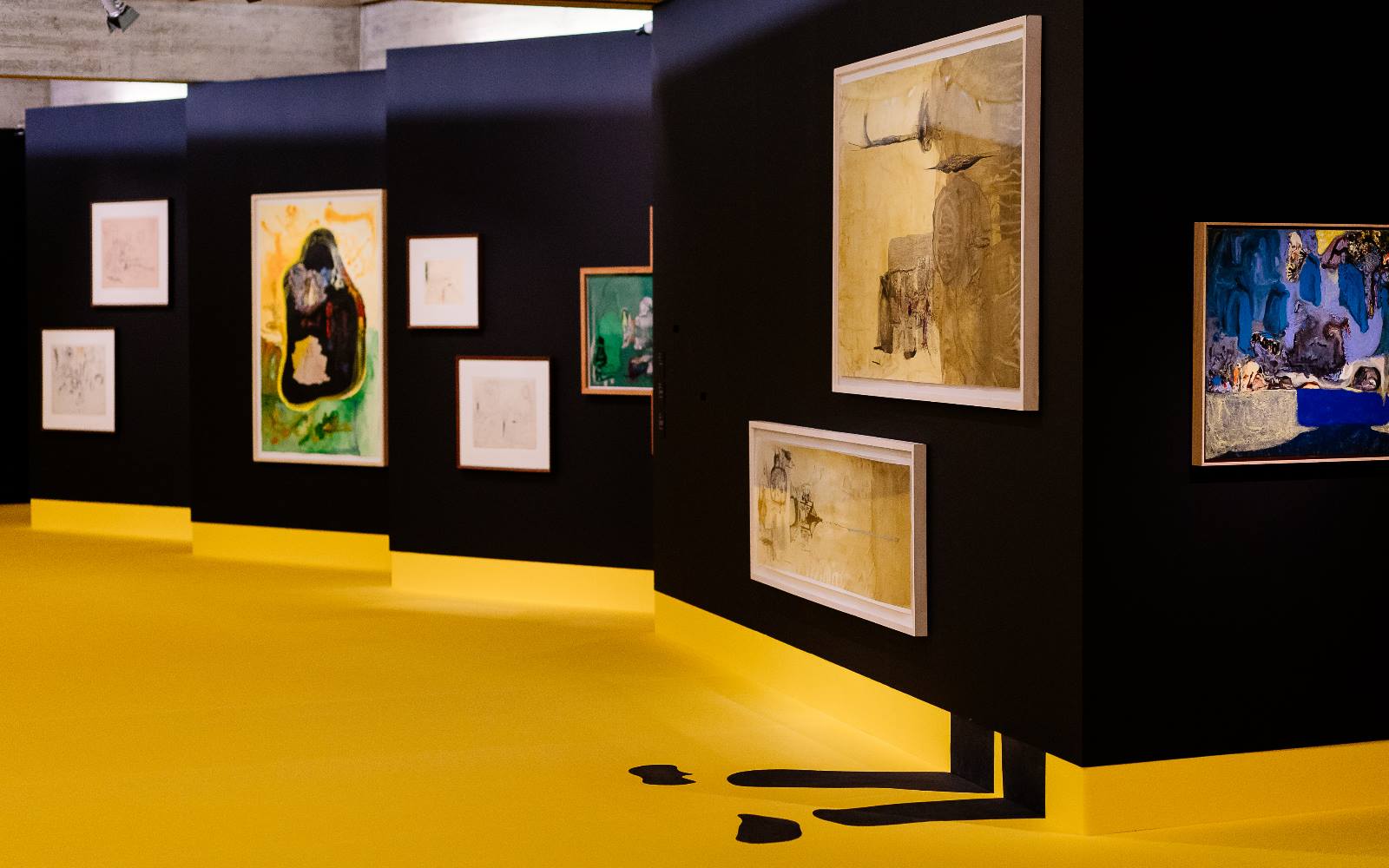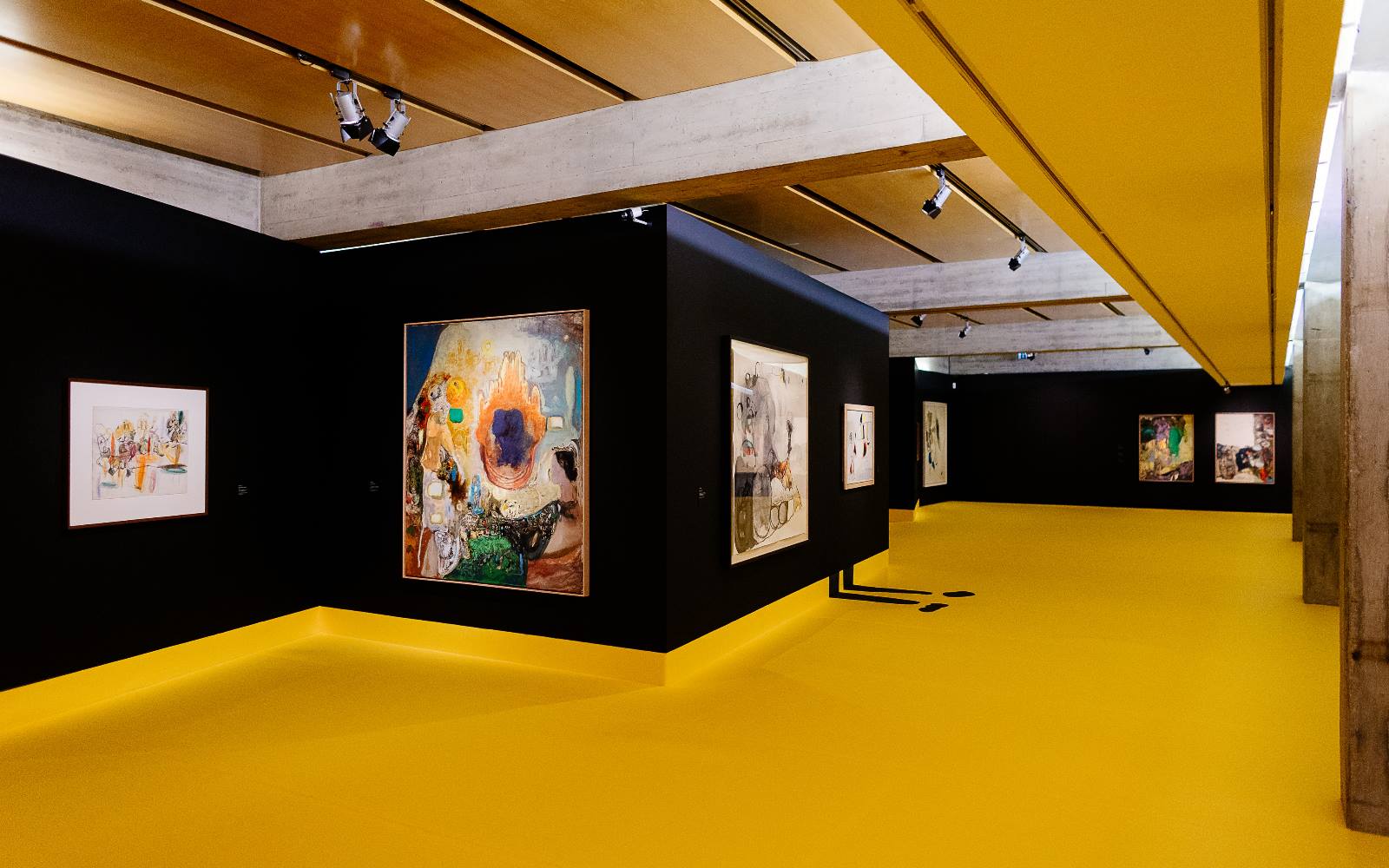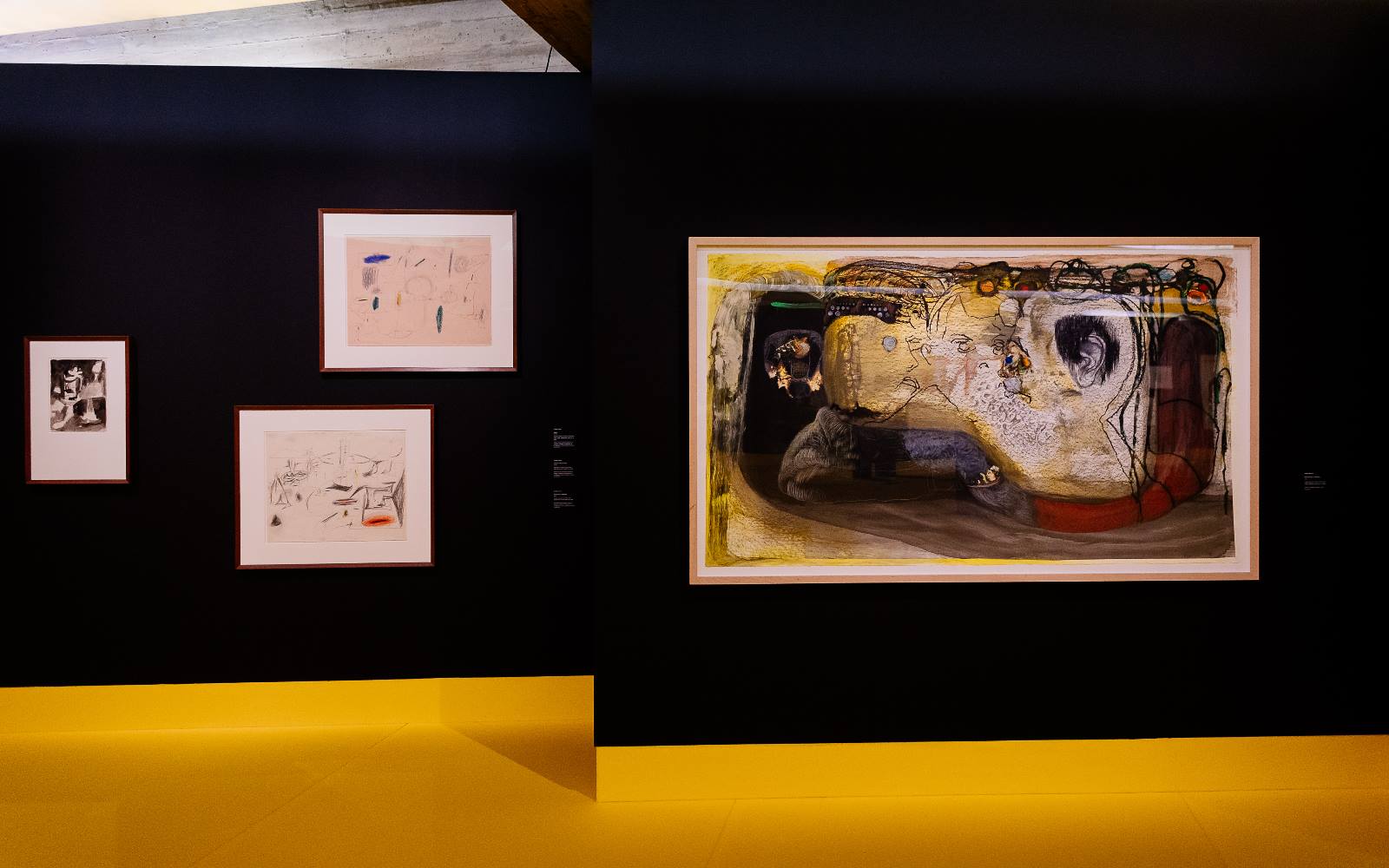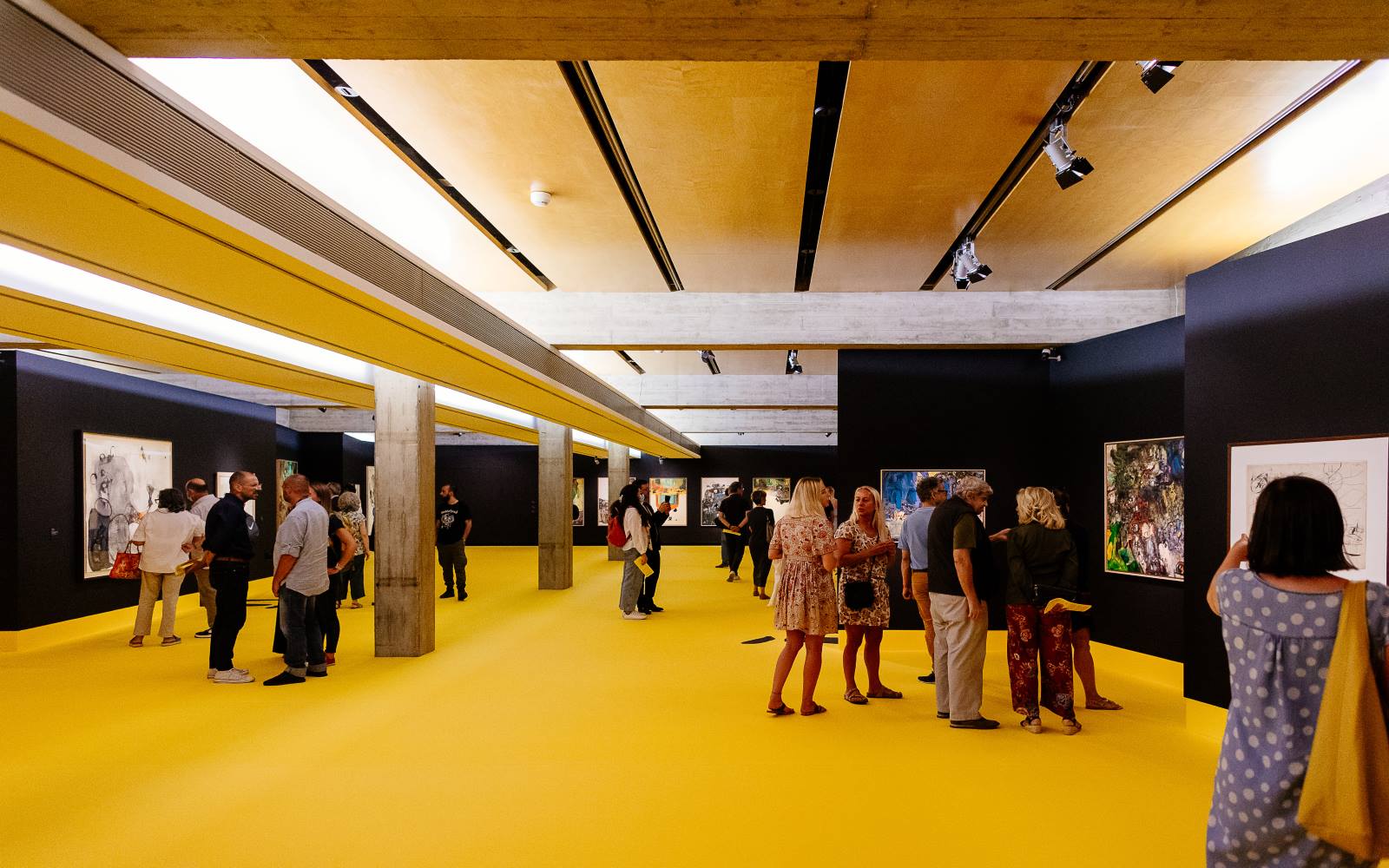
to go to. Jorge Queiroz | Arshile Gorky
Event Slider
Date
- Closed on Tuesday
Location
Temporary Exhibition Gallery Calouste Gulbenkian MuseumThis exhibition centres on the bringing together of two artists, one modern, Arshile Gorky (Khorkom, Armenia, c. 1904– Sherman, Connecticut, 1948), and the other contemporary, Jorge Queiroz (Lisbon, 1966). The initial idea was simply to observe the way in which Gorky’s work ‘speaks’ to Queiroz. And Queiroz transformed the project into an installation in which he welcomes, or receives, Gorky’s visit. As the artist mentioned in an accompanying text, he ‘frequented Gorky to the point of incorporating him into the vision for the exhibition (…) and Gorky was there [in the exhibition, in the studio] almost always sitting in black and white, like his photograph’.
Due to its long-standing relationship with Armenia, the Gulbenkian Foundation has a long term loan of 57 works by Arshile Gorky, property of the Diocese of the Armenian Church of America (Eastern), in New York, and another three works in the Modern Art Centre collection. It was from this group that Queiroz selected the paintings and drawings to be presented in this exhibition, all belonging to the final period in Gorky’s career, in the 1940s, unanimously regarded as his best phase, in which the artist reached full maturity and achieved a visual language that was entirely his own.
This group was also complemented by the loan of an exceptional painting from the Museo Thyssen-Bornemisza. Entitled Last Painting (The Black Monk) and dated 1948, it is widely believed to be Gorky’s final painting, found on the easel in his studio when he took his own life.
We look for resonances, echoes and differences between the works of both artists, even though the entire exhibition is created by Queiroz, an invitation to Gorky’s somehow guiding and ghostly presence.
Reality emerges through the works on display; they are the visible corpus where the work of the two artists briefly meets. This renders even more powerful the presence of Gorky’s final painting, based on the reading of Chekhov’s story of the same name. Published in 1893, The Black Monk tells of the final years in the life of a young and erudite scholar who suffers a nervous breakdown and delusions of grandeur, in which he is visited by the apparition of a black monk who convinces him that he has been chosen by God for a higher purpose. Although he fleetingly experiences the happiness of marriage, the young man finds himself increasingly plunged into mediocrity without the monk’s company, and ends up dying of tuberculosis, with a final hallucination in which he is guided to glory. Gorky is thought to have found analogies between his own life and the tragic fate of Andrey Kovrin, the protagonist of Chekhov’s tale.
Opposite this painting, on the other side of the room, Queiroz displays five canvases made for the exhibition, in which he painted over screen-printed lines, as though on writing paper, evoking his reading of Gorky’s extensive and recently published correspondence.[1] Queiroz’s paintings comment on and heighten the mystery that surrounds this encounter, which he agreed to organise, despite having to feel his way as though in a dream, or even a nightmare. Queiroz has been familiar since an early age with Gorky’s work, which was exhibited in the Gulbenkian in 1984, the year when the Mooradian Collection mentioned above arrived in Lisbon. The exhibition also includes another three paintings and a video by Queiroz, made specifically for this project, as well as several of his earlier works, on canvas and on paper.
The title of the exhibition, ‘to go to,’ was thought up by Queiroz, who wrote: ‘I think it’s a graphic image that goes in two directions: whether backwards or forwards the result is the same. For me, graphically, it’s a face. Also two men with hats, crossing a bridge.’ Suggesting a biunivocal correspondence, this palindrome (capicua in Portuguese) of words summarises the relative position between the works on display, the two artists and the observer. It is necessary ‘to go to,’ we have to move ourselves to see, to compare or, simply, to leave the place we are in. Observers are asked to move about, treading on a soft yellow carpet on which their footsteps leave a mark.
[1] Arshile Gorky. The Plow and the Song. A Life in Letters and Documents, Matthew Spender (ed.), Zurich: Hauser & Wirth Publishers, 2018
Curator: Ana Vasconcelos
INSTALLATION VIEWS




